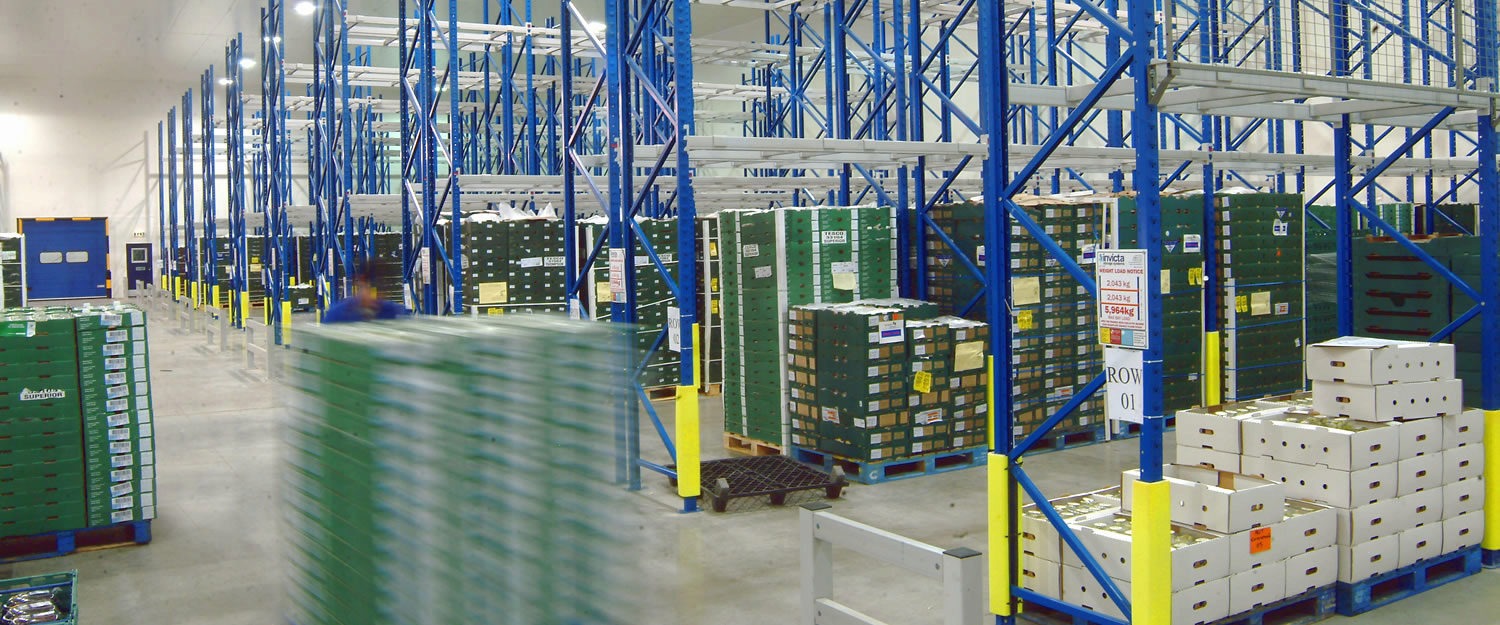For your information
You are being redirected to one of our divisional subsites which contains more detailed information on the required division. To navigate back to the main Invicta Group site, please click the link found in the footer at the bottom of the page.
How to prevent the spread of Omicron in warehouses
25th January 2022
Getting back to work
Quick Quote
Contact Mick Coyne
To get a quotation or arrange a free site survey - Call Mick Coyne on
-
 UK
UK
Current location:
Quick Quote
Contact Mick Coyne
-
 UK
UK
Current location:
The Omicron variant of the coronavirus has proven to be the most contagious yet, and has arrived at a point when many people are fatigued by the virus. This is manifesting in a lack of care being taken to avoid exposure, leading to hundreds of thousands of people being forced to self-isolate.
This is a difficult situation for many businesses, but particularly those in the logistics and warehouse sectors, where working from home isn’t a possibility. Here then are some tips on maintaining vigilance during this difficult period, and preventing the spread of Omicron in warehouses.
Encourage vaccinations
All scientific evidence suggests that vaccine uptake is the biggest weapon against all forms of the coronavirus. Being triple vaccinated – ideally with the Pfizer or Moderna vaccines – is seen as the best way to prevent people from catching and spreading the Omicron variant, as well as limiting the damage it can do in the short and long term.
While receiving the vaccines can be seen as a personal choice, this should not cloud your judgement when it comes to making the right decision for your business. Personal choices can have consequences, and employees who opt not to receive the coronavirus vaccine should not expect to be able to work if it jeopardises their health, the health of others, and the productivity and success of the business.
Keep the space well ventilated
The coronavirus is primarily an airborne disease, and the Omicron variant has been shown to spread more easily than previous variants. This means that proper ventilation is more important than ever to eliminate the droplets we expel when talking, breathing, coughing or sneezing.
This is obviously problematic during the winter months, but this cannot be seen as an excuse to keep windows closed. The need for heating should be balanced with the risks of the virus, and employees should be provided with warm clothing and other forms of protection from the cold if necessary to counteract the required ventilation.
Enforce social distancing
Social distancing is a concept we’re all familiar with at this point, but one that inexplicably seems to have gone out of the window. Visit any shop or other indoor space, and you’re unlikely to see people even maintaining one metre of distancing, let alone the required two metres.
With Omicron spreading so much more easily and rapidly than other variants, social distancing is more important than ever. Use floor markers to make the required distances more clear, and try to manage tasks in such a way that warehouse operatives are not picking our travelling parallel to one another for any prolonged period of time.
Make sanitiser readily available
Along with social distancing, sanitiser has been one of the more neglected measures to tackle the coronavirus in recent months. While the virus is predominantly airborne, it is still possible to catch it from surfaces, as the particles which spread it can land in them and be transmitted for several hours. As such, hand sanitiser remains an important weapon against Omicron and other variants.
Sanitiser is best provided at key checkpoints, such as entrances to the warehouse, or at the end of aisles. As well as making dispensers available, you might also consider distributing pocket sized bottles to your staff. As well as allowing them to sanitise when needed, it will help to encourage good hygiene practices – reducing absences from all forms of transmissible disease.
Enforce mask wearing
Despite the reluctance of certain politicians, face masks remain the most significant and effective measure we can all take to reduce COVID transmission in our daily lives. As an airborne virus, it’s been amply proved that masks of any kind reduce the spread of the virus by absorbing some of the droplets we release when we breathe, talk or cough.
If you operate a warehouse, you’re probably familiar with PPE, and more particularly RPE (respiratory protective equipment). While normal cloth masks still help, an N95 mask will have the most substantial effect on COVID transmission. These masks will be familiar to anyone who’s been exposed to particulates as a job hazard, and block at least 95% of 0.3 micron particles, the tiniest thing that the virus is likely to hitch a ride on.
Consider your warehouse layout
The design of your warehouse could be causing bottlenecks that lead people to come into close contact with each other unnecessarily. Similarly, the layout may inhibit the airflow through the warehouse, which is crucial to ventilate the entire space, and ensure that any infectious particles do not linger in the air.
While dramatic, this may be a good opportunity to consider a racking system redesign. High density wide aisle pallet racking may allow for more space for social distancing, without necessarily reducing the amount of pallets you can store. Elsewhere, a multi-tier racking system or mezzanine floor with multiple entry points could allow you to reroute traffic without changing your current floor plan.
Employ automation
Robots are vulnerable to other kinds of viruses, but they can’t catch COVID. While they’re are a variety of reasons why you shouldn’t be replacing all of your staff with robots (or autonomous vehicles), introducing some to the workplace can allow you to reduce the number of staff in the warehouse at any given time, and thus reduce the risk of transmission.
By automating tasks which might ordinarily involve people being in close contact with each other – e.g. picking or packing goods – you can further mitigate these risks. You’ll also gain the general benefit of workers that don’t need to take breaks, and can work off-hours with minimal oversight – allowing you to increase productivity and cover any absences due to staff sickness.
—
Most of these tips are things you may have heard or seen before, but may not be applying at this point in the pandemic. By reiterating them and their importance to employees, you should hopefully be able to avoid infections in your warehouse – and encourage staff to keep themselves safer outside work.
Accreditations & Affiliations







Start your project
Tell us about your project. Please complete this form. One of our sales team will come back to you with more details. If you prefer, you can drop us an email.




Share/Like this page